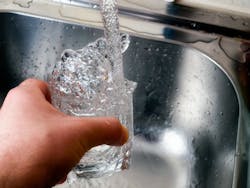What is Potable Reuse?
According to U.S. EPA, potable reuse is the process of using treated wastewater for drinking water after undergoing the process of filtration and disinfection.
The types of potable water reuse are indirect potable reuse and direct potable reuse. EPA’s 2017 Potable Reuse Compendium features the current state of potable water reuse in the U.S. This compendium mentions that water recycling and water reuse are used synonymously.
Additionally, EPA’s published 2012 Guidelines for Water Reuse acts as a resource for water reuse practices.
According to WateReuse Association, potable reuse is considered a feasible method to ensure water security as water shortages due to the impacts of climate change affect water supplies. WateReuse also notes that potable reuse results in more water going back into water sources while reducing nutrient loads to bodies of water.
Indirect Potable Reuse Definition
Indirect potable reuse refers to water reuse that uses an environmental buffer.
A facility would treat water and then discharge it into other sources such as lakes, rivers, or groundwater aquifers. From there, a drinking water plant or other facility would intake the water from one of those sources and treat it for its intended use within proper regulatory and compliance frameworks.
According to the National Library of Medicine, this process is beneficial because it is a water supply alternative that does not need rainfall.
Direct Potable Reuse Definition
According to EPA, direct potable reuse involves the treatment and distribution of water without an environmental buffer. The previously mentioned compendium states that direct potable reuse “includes the treatment of reclaimed water at an Advanced Wastewater Treatment Facility for direct distribution.”
What is Non-Potable Reuse?
Non potable reuse as defined by EPA is when “water is captured, treated, and used for non-drinking purposes, such as toilet flushing, clothes washing, and irrigation.”
EPA’s compendium notes that centralized non-potable reuse requires “dedicated pipe networks and pumping systems, or an alternate delivery system” in order to operate. An example of a common non-potable reuse practice is rainwater capture for lawn irrigation or watering plants.
Is Potable Reuse Expensive?
The cost of potable reuse depends on many factors.
According to the EPA Potable Reuse Compendium, operations and maintenance costs for membrane based potable reuse facilities generally range from $1.8 to $2.0 per thousand gallons or $0.48 to $0.53 dollars per cubic meter. Operations and maintenance costs do vary depending on the production of the plant while other operations and maintenance costs are fixed.
Federal potable reuse regulations do not exist in the U.S., according to the American Water Works Association (AWWA). AWWA adds that because it reduces groundwater extraction and minimizes wastewater discharges to the environment, potable reuse may lower energy costs in some cases.
What is the Difference Between Potable & Reclaimed Water?
Potable water is suitable for human consumption. Reclaimed water is water that is used more than one time before it passes back into the natural water cycle. According to the EPA reclaimed water can be “used for agriculture and irrigation, potable water supplies, groundwater replenishment, industrial processes, and environmental restoration.”
